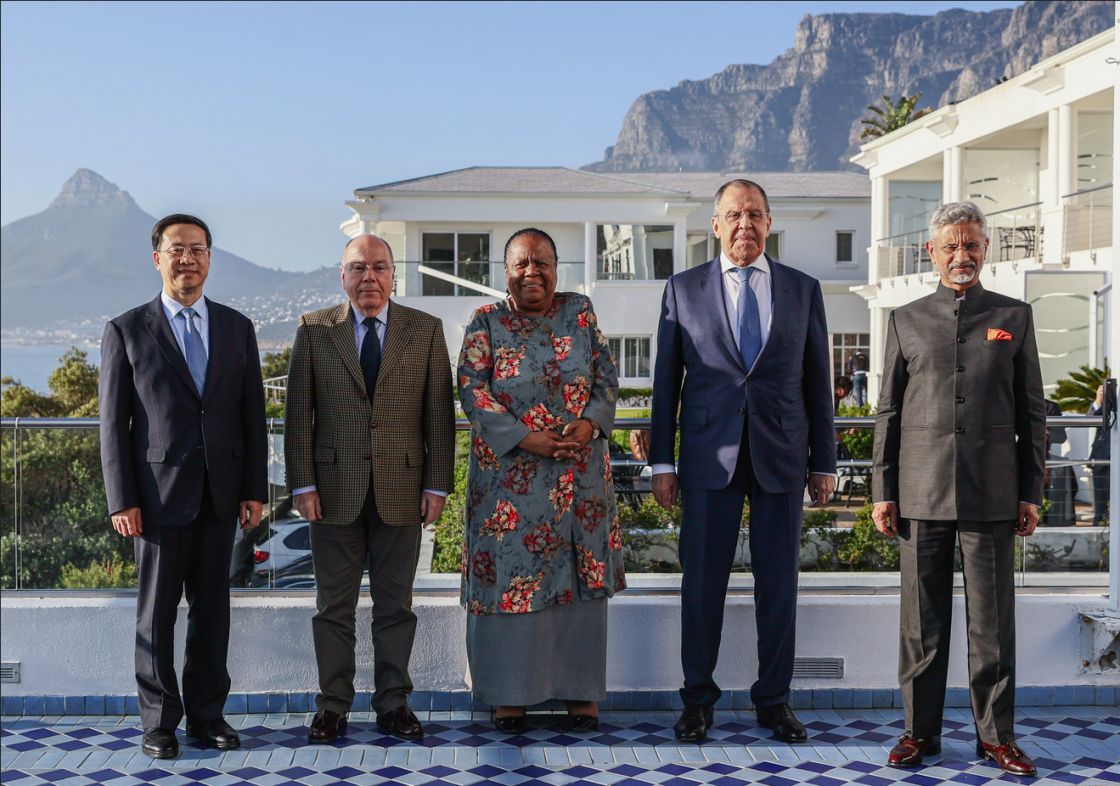- Editorials
- Posted
Kassioun Editorial 1130: What Will the World Look Like Post-BRICS 2023?
Preparations continue for a long-discussed and long-awaited pivotal BRICS summit, the Johannesburg, South Africa Summit, in August 2023.
BRICS with its five countries, and before any new countries joining, constitutes 42% of the world’s population, 31.5% of the global gross product, and 26.7% of the world’s land area.
Potential new members are included in two lists, a short one whose members are likely to join soon, and a long one that will not join soon. In the short list, the most prominent are Iran, Saudi Arabia, and Turkey, and among those in the long list are Egypt, Algeria, and Argentina.
Despite the great importance of potential accessions and the consequent rearrangement of the entire global system, the issue of the BRICS currency is at the top of the priorities in terms of its major impacts on the future of the entire world.
The primary tool in Western, particularly the American, domination over the entire world, and in enslaving and plundering it, is the dollar as a global currency, whether as a means of payment, as a reserve, or as a hoarding means, and as an investment means. The dollar’s biggest defect is not only that it is issued by one country and imposed on the entire world, but also in the fact that it is issued without any material economic basis, neither gold nor anything else. It worth noting here that the US’ contribution to global product decreased in 2022 to 15.5%.
The new proposed BRICS currency will be based on a solid material basis, which is the gross domestic product of the countries participating in it, and on gold as one of its material pillars. For this reason, it will be a currency that guarantees equal exchange among the BRICS countries and provides all other countries of the world with the possibility of equal exchange.
Of course, the mere emergence of the BRICS currency will not mean the immediate disappearance of the dollar, but it will certainly mean an additional and sharp decline in its role at the global level. Experts estimate that within at most 2-5 years from the date of the emergence of the BRICS currency, the share that the dollar occupies today in the global market will drop by half. This will have major consequences all over the world:
First: Inside the US, the dollar’s revenue-generation constitutes approximately $16 trillion of the US’ annual gross product, compared to $7 trillion of real production. If the dollar loses half of what it occupies in the global market, this means that the US gross domestic product will decrease by about $8 trillion.
It is difficult to imagine what a decline of this magnitude could lead to, but at minimum it will result in a rise in the intensity of internal contradictions and a decline in the ability to finance foreign military and political activity. At a maximum, it will result in a civil war inside the US, and perhaps the detachment between the rich states on the one hand and the poor ones on the other. Between these two extremes, there is the possibility of additional retreat with attempts to arrange things internally and attempts to ignite more tension hotbeds around the world.
Second: n Europe, the role and influence of the euro will decline as well. However, the greatest impact will perhaps be the synergy between the exacerbating internal economic crises and US efforts to push Europe to fight with Russia to the last European with the aim of destroying both. The US will try to do this through a new form of fascism in Europe, which will not be a single, centralized system along the lines of Nazism; rather, it will be several fascist regimes that suppress their people and fight among themselves, leading to blood and money feeding the treasury of the American Dracula.
Third: China's role around the world will continue to rise, not only economically, but also politically. The China-mediated Saudi-Iranian settlement example will turn into the first example among many that will follow, including others within our region. Additionally, China’s strategic alliance with Russia will continue to deepen and expand.
Fourth: In Russia, the internal struggle will increasingly intensify, and the process of turning against capitalism, within the framework of the struggle with imperialism, will become, as Lenin had predicted, more present and more urgent. This turning, which seemed a possibility over the past years, has now become a necessary path, with increasing indications daily of its advancement to the end. Russia will be allowed to play the role it lost with the collapse of the Soviet Union by presenting a model at the global level.
Fifth: Regional crises around the world, and with a greater role for Russia and China, will move towards resolution and perpetuation of stability on the basis of implementation of UN and UN Security Council resolutions, albeit by one side, include in Palestine and Syria.
All of these are general trends that the post-BRICS 2023 world is promising. Of course, reaching their end will not be along a straight path, but rather through inevitable zigzags and obstacles. However, the light at the end of the global tunnel has become clear and evident, and the path towards it has become more systematic and faster.


